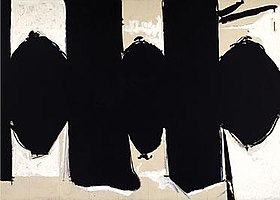There are reports that between two and six individuals have been arrested in connection with the theft of 18 Chinese objects from the Fitzwilliam Museum in Cambridge. The theft was the subject of BBC’s Crimewatch Tuesday:
The stolen pieces had been given as gifts or bequests to the museum, with some experts estimating the artifacts to be worth approximately £18 million (about $28.7 million Cdn). None of the artifacts has been recovered. Police sought help from the public through a segment on the BBC-TV program Crimewatch on Tuesday evening. The show aired closed-circuit camera footage of four suspects sought in conjunction with the robbery.
As Dick Ellis explained in an interview last week, these thieves probably saw the booming trade in Chinese artworks, and may not have understood how difficult an eventual sale would be. Much in the same way similar objects were stolen from the Durham museum.
 Noah Charney speculated last week that the stolen objects will be “smuggled [to China] . . . for in China the general rules about not purchasing art without performing Due Diligence and checking stolen art databases do not apply. Provenance is far less of an issue, sometimes for cultural reasons, but also for practical ones–Internet black-outs mean that many in China could not check stolen art databases, even if they were inclined to do so.” I’m not sure that will be the case.
Noah Charney speculated last week that the stolen objects will be “smuggled [to China] . . . for in China the general rules about not purchasing art without performing Due Diligence and checking stolen art databases do not apply. Provenance is far less of an issue, sometimes for cultural reasons, but also for practical ones–Internet black-outs mean that many in China could not check stolen art databases, even if they were inclined to do so.” I’m not sure that will be the case.
The Chinese have—on paper at least—the most regulated art market in the world, with a tiered series of regulation. It is one of the only sets of regulations which puts direct regulation in the art market, at the point of sale. Are there problems and corruption? Perhaps. But what art market—whether its in Rome, Paris, London, or New York is not corrupt?
In 2002, the Standing Committee of the National People’s Congress passed the Law on the Protection of Cultural Relics. The 2002 Law legalizes private transactions involving cultural relics in five circumstances, (1) legal inheritance or gift; (2) purchase from cultural relics shops; (3) purchase from cultural relics auction enterprises; (4) exchanges or transfers between individual citizens; and (5) other methods authorized by the central government. Many of these transactions take place at officially sanctioned cultural relics shops and auction enterprises; and the 2002 Law prohibits a cultural relic shop from running an auction and vice versa.
Under Article 58, the government may buy any cultural relic submitted to a mandatory inspection before sale pursuant to Article 56. During this mandatory inspection, under Article 56, the government is given a kind of right of first refusal, with the purchase price determined by the government representative. Pursuant to article 57, in the event of a sale to a private individual, a report is produced, effectively tracking the buyers and sellers of cultural objects. This new regulatory framework seems a very aggressive strategy, and one that, if implemented effectively, could positively impact the illicit trade in China. However, implementing this strategy may be difficult and subject to corruption. And yet by recording who buys what, it may be possible not only to track the chain of title of specific cultural objects, but also to evaluate whether individuals are routinely buying and selling stolen, looted, or suspicious objects. What other nation does this routinely? Perhaps the Italian Carabinieri, but that may be it.
Many in the West have an immediate reaction to all things China. And I think that quote above does not really convey the reality of the Chinese art market. Prof. Paul Bator remarked in 1983 that China was the great under-researched area of the world when it comes to sources of heritage theft (he called it art theft). Despite s few reports, that is still the case. We can blame the Chinese for other problems perhaps, but the Chinese art market does not I think bear the collective guilt for the Fitzwilliam theft. Rather it seems to be a more homegrown set of thieves from East London.
- He Shuzhong, Protection of China’s Cultural Heritage, 5 J. Art, Antiquity & L., 19 (2000).
- J. David Murphy, Plunder and preservation : cultural property law and practice in the People’s Republic of China, (1995), http://www.bcin.ca/Interface/openbcin.cgi?submit=submit&Chinkey=204154 (last visited May 2, 2012).
- Andrew Jacobs, China Hunts for Art Treasures in U.S. Museums, The New York Times, December 17, 2009, http://www.nytimes.com/2009/12/17/world/asia/17china.html?_r=2&hp (last visited Dec 17, 2009).
- Peter Foster, China to study British Museum for looted artefacts, Telegraph.co.uk, October 19, 2009, http://www.telegraph.co.uk/news/worldnews/asia/china/6374959/China-to-study-British-Museum-for-looted-artefacts.html (last visited Oct 20, 2009).
Questions or Comments? Email me at derek.fincham@gmail.com







